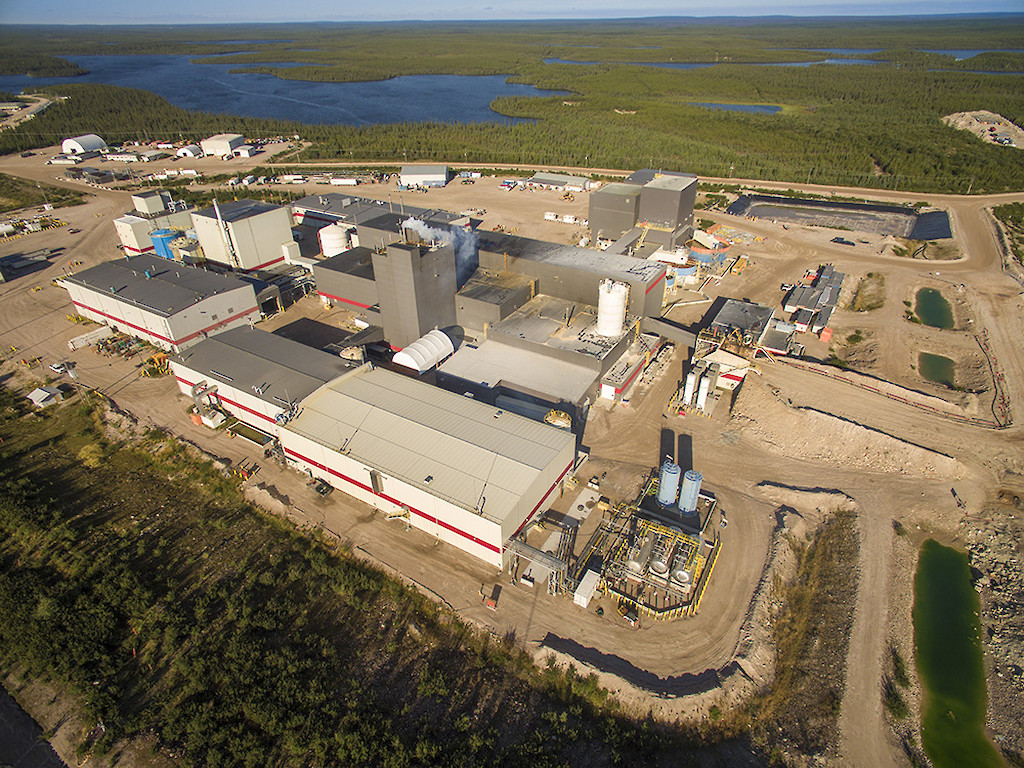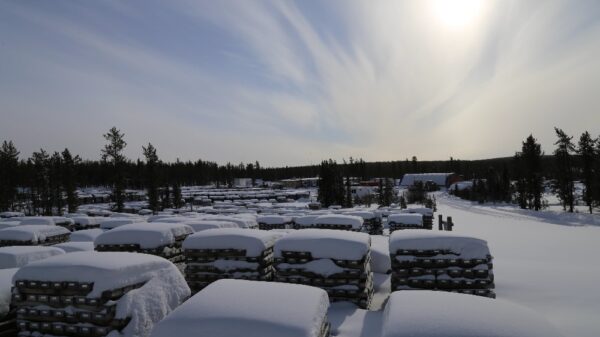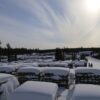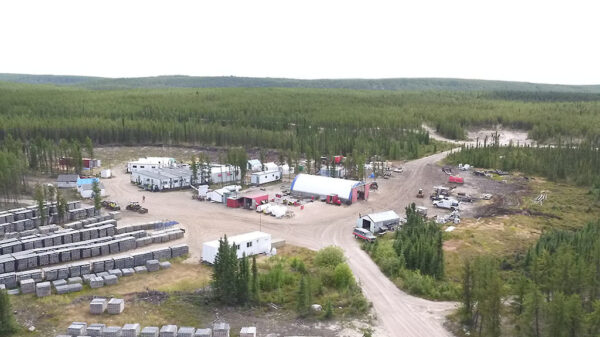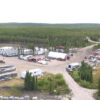Denison Mines (TSE: DML) (NYSE American: DNN) announced significant drill results at its Gryphon uranium deposit in northern Saskatchewan.
On Thursday, the company reported new mineralization about 40 metres beyond the defined boundary of the D1 lens.
The company intersected 2.3 metres grading 1.69 per cent equivalent uranium oxide (U3O8) in hole WR-837AD2, including a high-grade section of 0.5 metres at 5.48 per cent.
This extension confirms that Gryphon’s mineralization remains open down-plunge and along strike. This also provides clear potential to expand the resource. Gryphon is located three kilometres northwest of Denison’s Phoenix ISR project on the Wheeler River property.
The 2025 delineation drilling program increased drill density in known zones. This has confirmed the deposit’s geological model, and gathered technical data critical for advancing project development. The discovery of high-grade mineralization in a previously untested 100-metre gap demonstrates the deposit’s potential to grow beyond the current mine plan outlined in the 2023 Pre-Feasibility Study.
Gryphon comprises 24 stacked mineralized lenses, grouped into A through E series. The company said the D1 lens is a structurally controlled, high-grade zone that accounts for about 10 per cent of the deposit’s indicated resources.
As of 2018, Gryphon held indicated mineral resources of 61.9 million pounds of U3O8 at an average grade of 1.7 per cent, plus 1.9 million pounds at 1.2 per cent. The 2023 PFS update reported robust economics: an after-tax net present value of CAD$864 million and an internal rate of return of 37.6 per cent, assuming a uranium price of USD$75 dollars per pound. The company also estimates operating costs at USD$12.75 dollars per pound, with all-in sustaining costs at USD$25.47 per pound.
Read more: Westinghouse and Google Cloud team up for next generation nuclear reactors
Read more: Westinghouse, Eclipse join forces on next generation nuclear projects
Geopolitical landscape for uranium is shifting fast
Denison reports initial results as radiometric equivalent uranium using down-hole gamma probes, with chemical assays pending.
With uranium markets improving due to tightening supply and renewed demand, Gryphon’s expanding high-grade zones position Denison well for future growth. Additionally, the company plans on follow-up drilling to test the newly discovered extensions and further define the resource.
This discovery confirms Gryphon’s mineralization extends beyond previous estimates. This discovery could also potentially enhance project economics.
The geopolitical landscape for uranium is shifting fast.
The United States has cut ties with Russia amid ongoing tensions, forcing it to scramble for alternative uranium suppliers. Russia was a major player in the global uranium market. Therefore, this move has tightened supply chains and added pressure on U.S. utilities to secure reliable sources elsewhere.
Canada seems the natural alternative, especially with its vast uranium reserves in the Athabasca Basin. But rising tariffs on Canadian uranium imports are driving up costs, complicating the economics for American buyers and potentially slowing the flow of Canadian uranium south of the border.
Players like Cameco Corporation (TSE: CCO) (NYSE: CCJ) and NexGen Energy Ltd (TSE: NXE) (NYSE: NXE) (ASX: NXG) all have high-grade deposits that could be fast tracked to meet rising global demand. Furthermore, as utilities pivot away from Russian supply, the Athabasca Basin’s world class uranium assets are poised become far more important.
Meanwhile, the nuclear industry is looking ahead with fresh optimism. Companies like Westinghouse are spearheading next generation nuclear technology, notably small modular reactors (SMRs). These reactors promise lower upfront costs, enhanced safety, and scalable deployment. This makes nuclear power a more attractive option as countries seek reliable, low-carbon energy sources.
.

